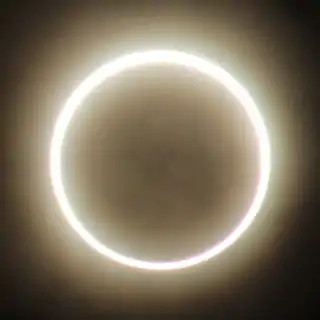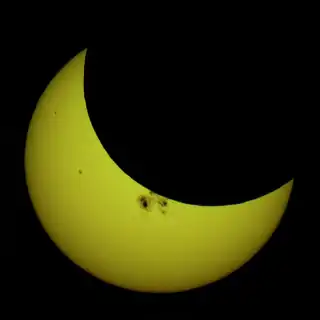| Solar eclipse of February 7, 2073 | |
|---|---|
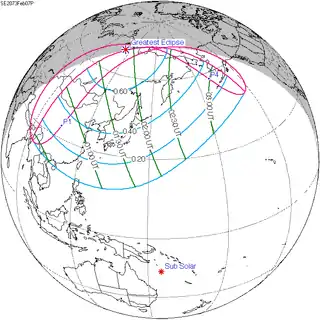 Map | |
| Type of eclipse | |
| Nature | Partial |
| Gamma | 1.1651 |
| Magnitude | 0.6768 |
| Maximum eclipse | |
| Coordinates | 70°30′N 114°54′E / 70.5°N 114.9°E |
| Times (UTC) | |
| Greatest eclipse | 1:55:59 |
| References | |
| Saros | 122 (61 of 70) |
| Catalog # (SE5000) | 9671 |
A partial solar eclipse will occur on Tuesday, February 7, 2073. A solar eclipse occurs when the Moon passes between Earth and the Sun, thereby totally or partly obscuring the image of the Sun for a viewer on Earth. A partial solar eclipse occurs in the polar regions of the Earth when the center of the Moon's shadow misses the Earth.
Related eclipses
Solar eclipses 2073–2076
This eclipse is a member of a semester series. An eclipse in a semester series of solar eclipses repeats approximately every 177 days and 4 hours (a semester) at alternating nodes of the Moon's orbit.[1]
| 122 | February 7, 2073 Partial |
127 | August 3, 2073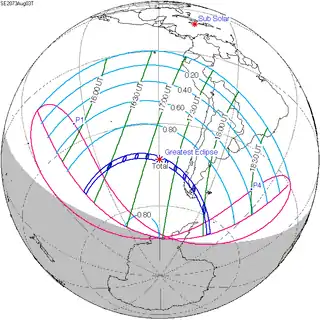 Total |
| 132 | January 27, 2074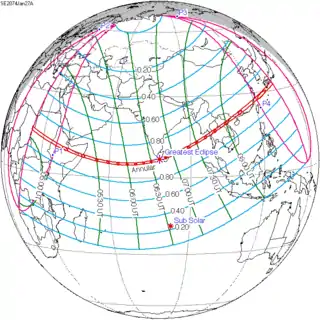 Annular |
137 | July 24, 2074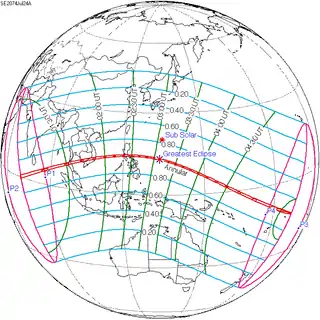 Annular |
| 142 | January 16, 2075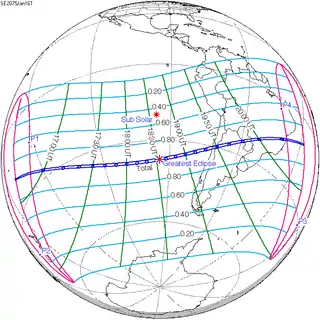 Total |
147 | July 13, 2075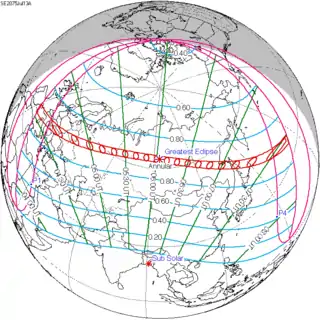 Annular |
| 152 | January 6, 2076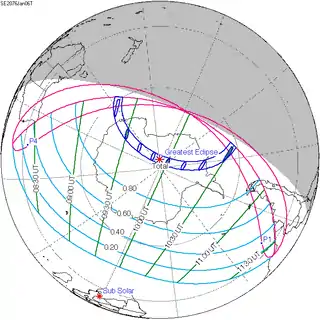 Total |
157 | July 1, 2076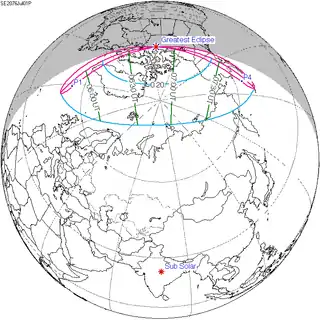 Partial |
References
- ↑ van Gent, R.H. "Solar- and Lunar-Eclipse Predictions from Antiquity to the Present". A Catalogue of Eclipse Cycles. Utrecht University. Retrieved 6 October 2018.
External links
This article is issued from Wikipedia. The text is licensed under Creative Commons - Attribution - Sharealike. Additional terms may apply for the media files.
.jpg.webp)
